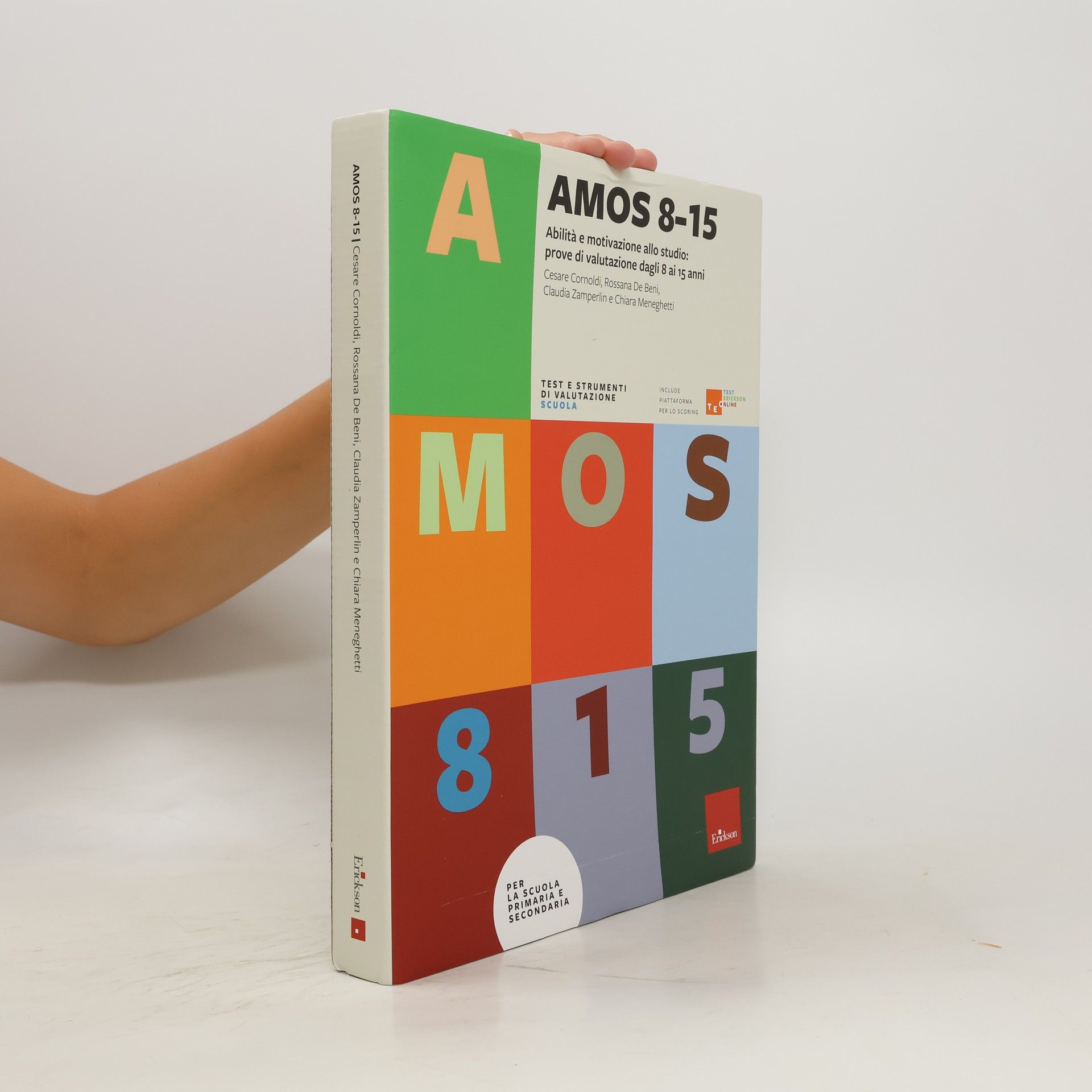Cesare Cornoldi Libri





Il volume propone un percorso di potenziamento delle abilità di scrittura utile per tutta la classe e in particolare per alunni con DSA e Bisogni Educativi Speciali, attraverso attività mirate a seconda delle diverse tipologie testuali. È suddiviso in tre - Schemi schemi e scalette di facilitazione procedurale per la stesura di testi narrativi, informativi e regolativi, che aiutano gli alunni nel processo di costruzione dei diversi tipi di testo. Completa la sezione uno schema sull'uso della punteggiatura, strutturato come agile strumento di consultazione da utilizzare durante la produzione dei testi. - Percorsi di tre percorsi autoportanti su altrettanti generi la lettera, il giornale e il giallo. Ciascun percorso propone una scheda introduttiva, che aiuta il docente a programmare il lavoro; materiali per l'alunno utili a richiamare la struttura e le caratteristiche del tipo di testo in oggetto; schede per esercitarsi nelle attività. - Schede di materiali aggiuntivi con livelli diversi di difficoltà, che possono essere utilizzati soprattutto nel caso di classi eterogenee con alunni in difficoltà, non italofoni o particolarmente dotati e competenti.
Nonverbal Learning Disabilities
- 202pagine
- 8 ore di lettura
Increasing numbers of children and adolescents are being diagnosed with nonverbal learning disabilities (NLD), yet clinicians and educators have few scientific resources to guide assessment and intervention. This book presents up-to-date knowledge on the nature of NLD and how to differentiate it from DSM-5 disorders such as autism spectrum disorder and developmental coordination disorder. Effective strategies for helping K-12 students and their families address the challenges of NLD in and outside of the classroom are illustrated with vivid case material. The authors thoughtfully consider controversies surrounding NLD, discuss why the diagnosis is not included in the current DSM and ICD classification systems, and identify important directions for future research.
Visuo-spatial Working Memory and Individual Differences
- 184pagine
- 7 ore di lettura
The authors present a systematic experimental method for exploring visuo-spatial cognition, emphasizing the analysis of individual differences. This approach aims to deepen the understanding of how various cognitive processes function and vary among individuals, providing insights into the complexities of cognitive abilities related to visual and spatial tasks.
This essential book offers an accessible, evidence-based guide to Nonverbal Learning Disability (NVLD) informed by the most current research, and clinical and educational practice. It provides a thorough explanation of the science behind the condition, alongside ideas, support, and practical tips for managing the everyday challenges of the disorder at school and in family life. Mammarella, Cardillo, and Broitman describe the main characteristics of the condition from both theoretical and practical points of view, as well as examining the similarities and differences between NVLD and other neurodevelopmental disorders. They explore the cognitive and academic weaknesses and strengths of children with NVLD, and the emotional and social difficulties they may experience. The book also provides a systematic review of scientific studies in this field whilst focusing on issues of diagnostic criteria, as well as assessment and intervention strategies. Practical examples are given for teachers and parents to help support children with NVLD in improving their visuospatial and motor skills, as well as peer-social relations, and in promoting the child's individual abilities. Understanding Nonverbal Learning Disability is essential reading for parents and practitioners in clinical and educational psychology, and health and social care, and students in these fields.